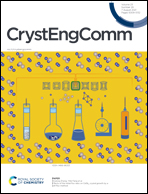Porous Co3O4 stabilized VS2 nanosheets obtained with a MOF template for the efficient HER†
Abstract
With the development of the economy, energy shortages and the greenhouse effect gradually become problems facing humanity. Hydrogen energy is clean energy and is expected to become the most vital low-carbon energy in the future. At present, industrial hydrogen production mainly uses precious metals such as Pt. Therefore, it is of great significance to design a low-cost hydrogen evolution catalyst comparable in terms of hydrogen production performance and stability. In this work, porous Co3O4 with a hollow structure was prepared using the MOF template method, and VS2 nanosheets were uniformly attached and grown hydrothermally on it, thereby constructing a unique morphology of TS-Co3O4@VS2. The test results show that the catalyst can achieve a hydrogen evolution overpotential as low as 175.29 mV and a low Tafel slope (57.0 mV dec−1) and can work stably for 500 cycles at a current density of 100 mA cm−2 without noticeable performance degradation. Compared with other similar materials, this material significantly improves the kinetic process of the HER, reduces the reaction energy barrier for hydrogen evolution, and improves the operational stability of the catalyst. We believe that this material can provide a reference for the design of transition metal disulfide catalysts.

- This article is part of the themed collection: Nanomaterials


 Please wait while we load your content...
Please wait while we load your content...